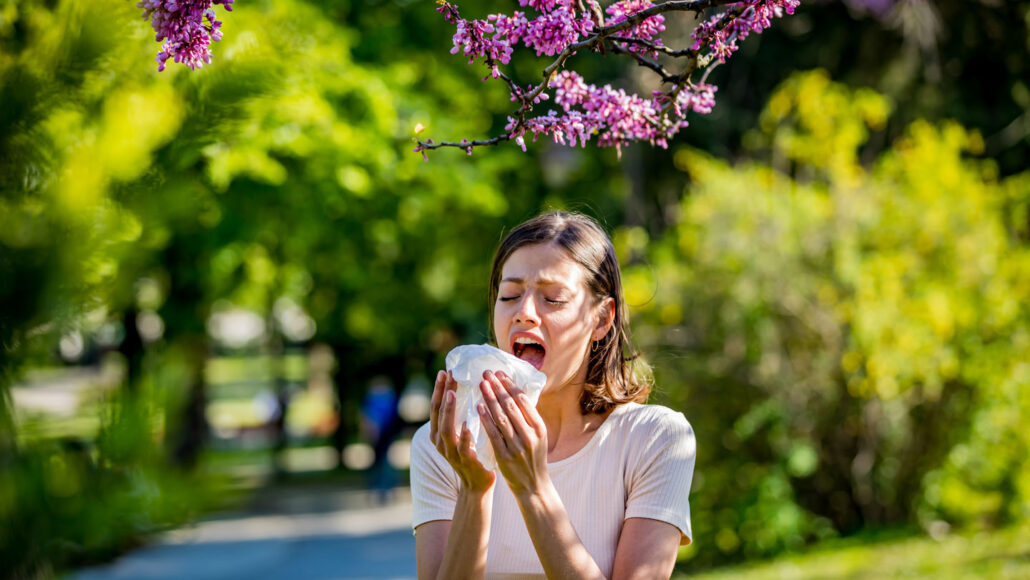Let’s learn about allergies
Allergies occur when harmless substances send the body’s defenses into overdrive

In springtime, pollen drifting through the air triggers seasonal allergies for many people.
RealPeopleGroup/Getty Images
For many people, springtime doesn’t just mean warmer weather and longer days. It also brings frequent sneezing, a stuffed-up nose or watery eyes. These symptoms are a result of seasonal allergies. In the spring, trees and grass release lots of pollen that, when inhaled, can trigger an allergic reaction. But pollen is far from the only allergen out there. People can be allergic to foods, pets, medicines and plenty of other substances.
Allergies happen when a person’s immune system overreacts to something harmless. The immune system’s job is to spot germs in the body and fight them off. But in someone with an allergy, the immune system mistakes a safe substance — such as pet dander or peanuts — for a major threat. The immune system mounts an attack against that apparent threat. The result is inflammation that can cause someone’s throat to swell, their skin to break out in a rash or their sinuses to get stuffed up.
A person’s chance of developing allergies may depend on both their genetics and their environment. About a quarter of U.S. adults have seasonal allergies, and nearly one in five U.S. kids do. Plus, almost 6 percent of both U.S. adults and kids have food allergies. To offer some relief, scientists are trying to find new ways to fight common allergies. For instance, a new cat food could neutralize the protein in felines that commonly triggers allergic reactions. And new toothpaste that contains small doses of peanut protein could help people build up a tolerance to this common allergen.
Want to know more? We’ve got some stories to get you started:
The many efforts to lick cat allergies Up to one in five people around the world may be allergic to cats. Science is coming to help their desire for kitty cuddles. (2/13/2020) Readability: 7.7
Food allergies can trigger stress and anxiety From peanut-free lunch tables to unsympathetic relatives, food allergies can cause considerable stress for a kid. As they transition toward independence, parents and counselors can help. (2/6/2020) Readability: 7.6
Could a toothpaste help treat peanut allergy? By rolling an immune therapy into a toothbrushing routine, one company hopes to show its product can build and maintain tolerance to peanut allergens. (4/13/2021) Readability: 8.2
Explore more
Explainer: What are allergies?
Explainer: The body’s immune system
Explainer: What are Antibodies?
Allergies linked to obesity and heart risks
Food allergies can trigger stress and anxiety
New success in treating allergies to peanuts and other foods
Chigger ‘bites’ may trigger an allergy to red meat
An asthma treatment may also help tame cat allergies
Giving cats a special food may one day help people with cat allergies
Activities
As many as one in 50 kids are allergic to eggs. If you, a friend or a family member are allergic to this common ingredient, it is possible to tweak recipes to avoid using the allergen. In this Science Buddies experiment, investigate how to use egg substitutes to create allergy-friendly foods.







